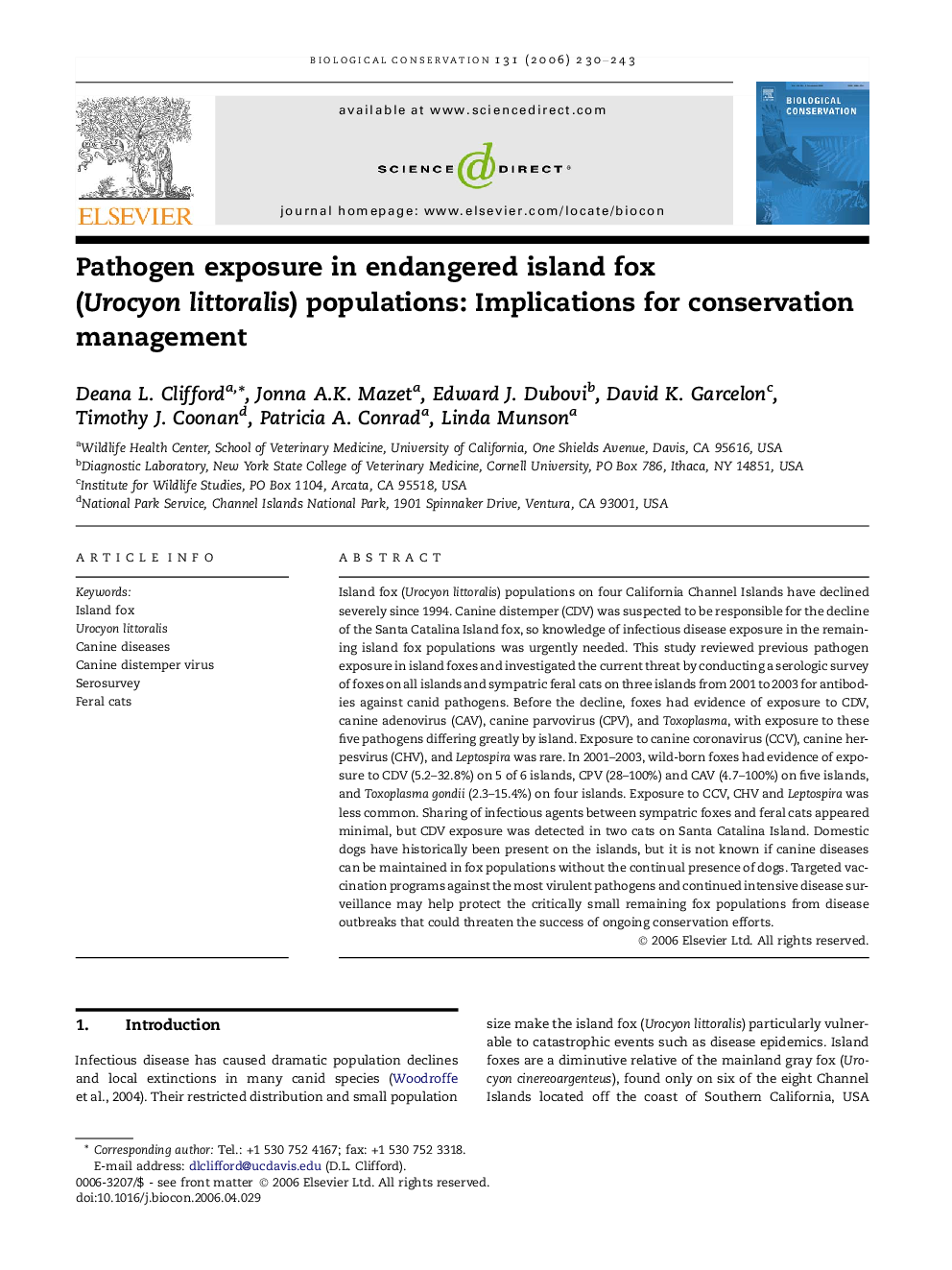| Article ID | Journal | Published Year | Pages | File Type |
|---|---|---|---|---|
| 4387632 | Biological Conservation | 2006 | 14 Pages |
Island fox (Urocyon littoralis) populations on four California Channel Islands have declined severely since 1994. Canine distemper (CDV) was suspected to be responsible for the decline of the Santa Catalina Island fox, so knowledge of infectious disease exposure in the remaining island fox populations was urgently needed. This study reviewed previous pathogen exposure in island foxes and investigated the current threat by conducting a serologic survey of foxes on all islands and sympatric feral cats on three islands from 2001 to 2003 for antibodies against canid pathogens. Before the decline, foxes had evidence of exposure to CDV, canine adenovirus (CAV), canine parvovirus (CPV), and Toxoplasma, with exposure to these five pathogens differing greatly by island. Exposure to canine coronavirus (CCV), canine herpesvirus (CHV), and Leptospira was rare. In 2001–2003, wild-born foxes had evidence of exposure to CDV (5.2–32.8%) on 5 of 6 islands, CPV (28–100%) and CAV (4.7–100%) on five islands, and Toxoplasma gondii (2.3–15.4%) on four islands. Exposure to CCV, CHV and Leptospira was less common. Sharing of infectious agents between sympatric foxes and feral cats appeared minimal, but CDV exposure was detected in two cats on Santa Catalina Island. Domestic dogs have historically been present on the islands, but it is not known if canine diseases can be maintained in fox populations without the continual presence of dogs. Targeted vaccination programs against the most virulent pathogens and continued intensive disease surveillance may help protect the critically small remaining fox populations from disease outbreaks that could threaten the success of ongoing conservation efforts.
